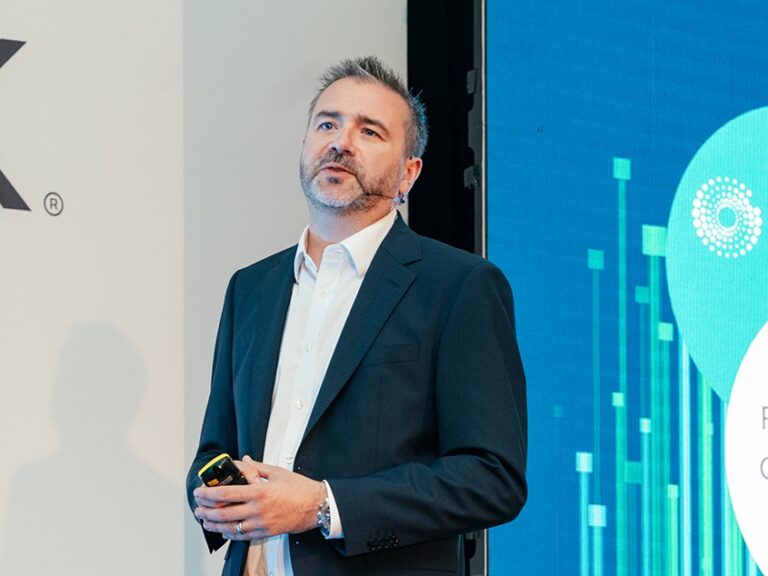Ethical Design Frameworks for Data-Driven Products

The modern digital environment depends heavily on data. Data-driven products, such personalized shopping experiences and predictive healthcare solutions, have fundamentally altered how we use technology.
But as this change takes place, the conflict between creativity and moral obligation has become more noticeable. These innovative solutions are based on data, which has the potential to be abused, exploited, and harmful. Ethical design frameworks have become not only a guiding principle but also a pressing need in this changing climate.
Creating interfaces and experiences that enable smooth data gathering, processing, and presentation is a common part of my job as a UI/UX designer. But even beyond making designs that are easy to use, I’ve realized that I have a greater duty to make sure that the products I create put fairness, openness, and user respect first. For data-driven products, ethical design is about promoting principles that promote diversity, trust, and long-term impact, not just following the law.
Data-driven goods have two sides by nature. On the one hand, they promise operational efficiency, predictive accuracy, and deep customisation. However, they are susceptible to moral hazards such as algorithmic bias, privacy violations, and surveillance issues.
Consider a recommendation algorithm designed to curate content based on user behavior. It may boost user engagement, but it can also lock people in echo chambers, stifling diverse opinions and feeding bigotry. In a similar vein, facial recognition software has drawn criticism for disproportionately misidentifying individuals of underrepresented groups, despite its remarkable accuracy.
These examples demonstrate how designers have a responsibility to take into account both what a product can and should achieve. Beyond technical skill, ethical design requires us to consider the broader cultural, societal, and individual implications of our work.
At its core, ethical design for data-driven products aims to align technology with human values. It entails developing experiences that are user-centered, principled, and both aesthetically beautiful and functional. This begins with transparency. Users are entitled to know how their information is gathered, saved, and utilized. An interface that explains these procedures in detail builds confidence and gives users the ability to make wise decisions.
Consider the way consent procedures are designed. All too frequently, customers are given complicated legalese or pre-checked boxes that make it difficult for them to grasp what they are getting into. Clarity and simplicity are given top priority in an ethical design approach, guaranteeing that consent is meaningful rather than ceremonial.
Fairness is another essential component of ethical design. In order to minimize biases that disproportionately affect particular groups, data-driven products should aim to be inclusive. This calls for attention to detail across the whole design process, from choosing datasets to fine-tuning algorithms and developing interfaces. It is our responsibility as designers to promote varied representation in datasets and thoroughly check our designs for unforeseen biases.
Personalized experiences are one of the distinguishing characteristics of data-driven products. Personalization is already a defining feature of contemporary design, from customized news feeds to adaptive learning systems. However, obtaining this degree of personalization frequently necessitates gathering enormous volumes of user data, which raises serious privacy issues.
Achieving a balance between privacy and personalization is a problem for designers. This entails using a privacy-by-design strategy, in which data security is incorporated into the architecture of the product from the beginning. Designers should promote minimalism—collecting only the information required to provide value to the user—instead than collecting data carelessly.
To provide health insights, a fitness app might, for instance, track heart rate and steps. It does not, however, require access to a user’s social network relationships or precise location history. Without sacrificing functionality, designers can protect user privacy by only collecting the data that is absolutely necessary.
Putting strong security measures in place is equally crucial. Users ought to have peace of mind knowing that their information is protected against security lapses or illegal access. Thoughtful interface design, such as clear notifications regarding data usage and easily understandable privacy settings, can help to reinforce this faith.
One important but frequently disregarded component of ethical design is accountability. Designers, developers, companies, and users are all part of the intricate network of stakeholders that data-driven products function inside. It can be difficult to assign blame when moral dilemmas occur, such as a data leak, a biased algorithm, or a deceptive user interface.
In order to solve this, designers need to promote openness in organizational procedures as well as user interactions. This entails keeping track of design choices, carrying out frequent ethical evaluations, and encouraging interdisciplinary cooperation. We can guarantee that ethical issues are given top priority throughout the product lifecycle by fostering an environment of accountability.
Moreover, designers should empower users with agency.Users can take charge of their data and hold companies responsible thanks to features like feedback loops, opt-in procedures, and thorough activity records. Giving people the option to see and remove their data, for example, improves transparency and strengthens confidence.
Empathy is at the core of ethical design. Developing items that appeal to people’s needs, anxieties, and goals requires an understanding of their desires. Beyond demographic research and usability testing, empathy entails carefully listening to a range of viewpoints and taking the wider ramifications of design choices into account.
Empathy demands us to pose challenging queries while creating data-driven product designs. How might this feature be misused? Who could be excluded or disadvantaged by this design?What unexpected repercussions might occur? We can detect possible ethical blind spots and take proactive measures to address them by addressing these concerns.
Empathy also includes vulnerable and marginalized groups. These groups are frequently disproportionately affected by data-driven goods, thus it is essential to design with inclusivity in mind. For instance, a healthcare app that gathers private medical data needs to make sure that its layout safeguards patient privacy and stays away from derogatory terminology.
There will only be a greater demand for ethical design frameworks as data-driven goods continue to change our environment. The decisions we make as designers now will affect society for years to come, affecting how people use technology and communicate with one another.
In my ideal future, ethical design will be a fundamental component of all products rather than an afterthought. This calls for a mentality change, where success is determined by the product’s capacity to advance equity, openness, and user welfare in addition to indicators like engagement and revenue.
We need to embrace systemic change in order to do this. Companies need to make ethical training investments, set explicit policies, and give designers the authority to confront unethical behavior. As guardians of consumer trust, designers must take responsibility for their work and push for choices that put people before profits.
Ultimately, ethical design is about making goods that improve the human experience rather than just preventing harm. We can use data to create a more sustainable, inclusive, and egalitarian digital future by integrating ethics into our designs.
About the Writer – Grace Ademola-Adenle
Grace Ademola-Adenle is a senior UI/UX designer with experience in delivering intuitive and visually appealing digital experiences. Having worked in the design field for over 5 years, she has distinguished herself as an authority in user-centered design, working to ensure each of her products not only meets but exceeds expectation among its target audience.
She has contributed to the design of high-impact projects across industries and has demonstrated the ability in wireframing, user research, prototyping, usability testing, and product development.







